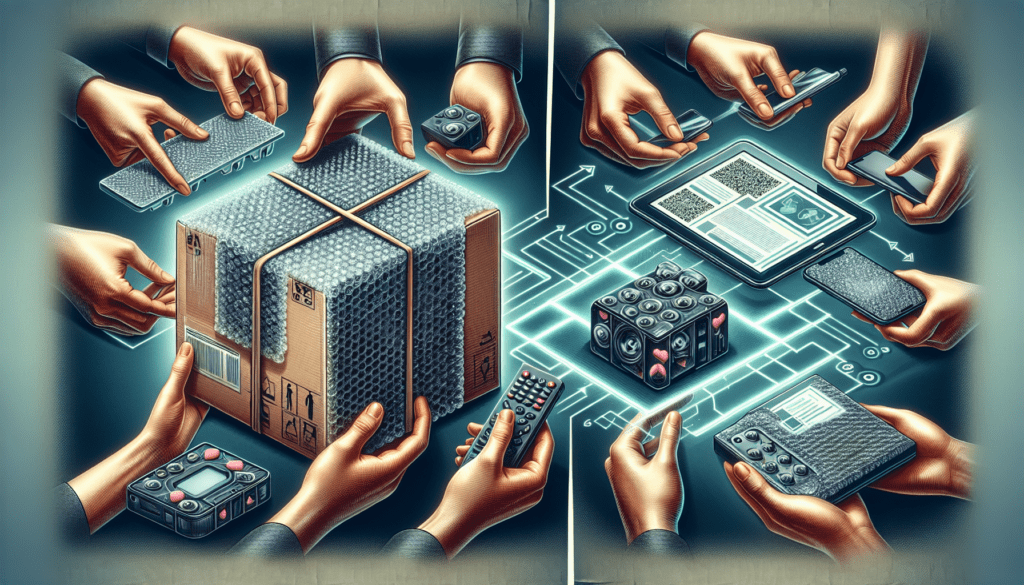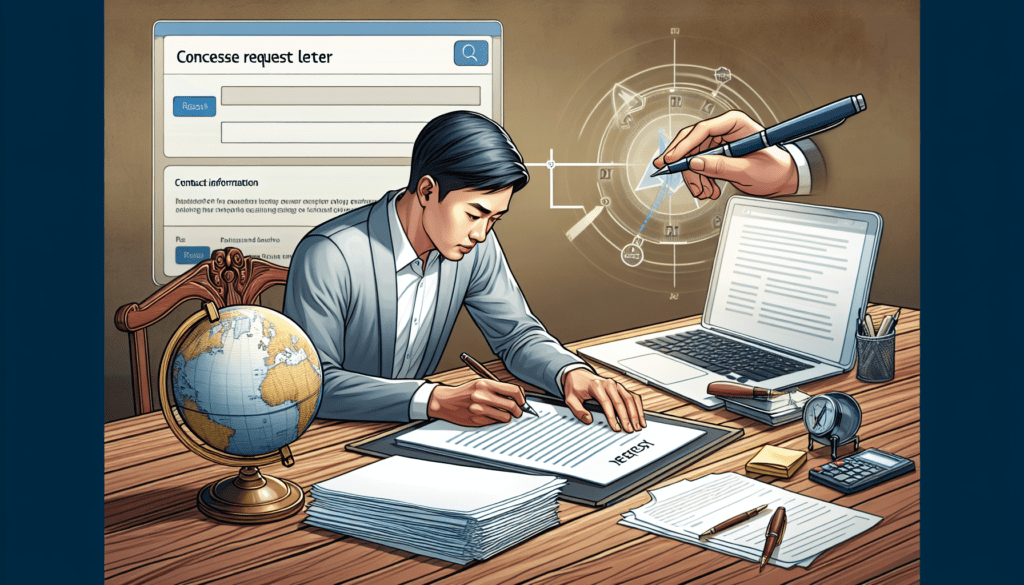Whether you’re looking to swap a product or make a return, there are key factors that you should consider to ensure a smooth and hassle-free exchange experience. From checking the return policy to examining the condition of the item, these factors play a crucial role in determining the success of your product exchange. In this article, we will discuss some important points to keep in mind when it comes to exchanging products, helping you navigate the process with ease and confidence.
Quality
Product durability
When evaluating the quality of a product, one important factor to consider is its durability. A durable product is one that is built to last, withstanding regular use and everyday wear and tear. This is vital because nobody wants to invest their hard-earned money in a product that will break or malfunction after a short period of time. A product with good durability will not only save you from constantly needing repairs or replacements but also provide peace of mind knowing that it will last for a long time.
Product reliability
Reliability is another key aspect of product quality. A reliable product is one that consistently performs its intended functions without any unexpected failures or breakdowns. When you purchase a product, you want it to work reliably, delivering the performance and features promised by the manufacturer. Whether it is a kitchen appliance, electronic gadget, or any other item, having a reliable product ensures that it will serve its purpose effectively and efficiently for an extended period.
Product performance
The performance of a product is a crucial consideration when evaluating its quality. You want a product that performs exceptionally well, meeting or surpassing your expectations. This includes factors such as speed, accuracy, efficiency, and overall effectiveness. The performance of a product directly impacts your experience and satisfaction as a user. Whether it’s a high-performing computer or a powerful vacuum cleaner, choosing a product with superior performance will enhance your daily tasks and make your life easier and more enjoyable.
Compatibility
Compatibility with existing infrastructure
When purchasing a new product, compatibility with your existing infrastructure is an essential factor to consider. This applies to a wide range of items, including electronic devices, software applications, and home automation systems. Ensuring compatibility means that the new product will seamlessly integrate with your current setup, eliminating the need for additional modifications or expenses. Compatibility minimizes the risk of compatibility issues, saves you time and effort, and provides a smooth transition from your old product to the new one.
Compatibility with other products
In addition to compatibility with your existing infrastructure, you should also consider the compatibility of the new product with other products you may own or plan to own in the future. This is particularly important if you have a specific ecosystem or brand preference. For example, if you already own a smartphone from a particular brand, choosing a smartwatch from the same brand ensures seamless integration and synchronization between the devices. Considering compatibility with other products can enhance the functionality of your overall setup and improve your user experience.
Compatibility with industry standards
Product compatibility with industry standards is vital, especially in sectors such as technology or healthcare. Industry standards ensure interoperability, allowing different products from various manufacturers to work together smoothly. Whether it’s a software application that adheres to standard protocols or medical equipment that complies with industry regulations, choosing a product that meets or exceeds industry standards ensures compatibility and interoperability. By selecting products that follow industry best practices, you can avoid potential issues and complications down the line.
Cost
Purchase price
When considering the cost of a product, the purchase price is the most obvious factor to evaluate. It refers to the initial amount of money you need to spend to acquire the product. It is essential to determine if the purchase price aligns with your budget and the value you expect to derive from the product. While seeking value for your money is important, it is crucial not to compromise on quality or performance in favor of a lower purchase price, as this may lead to additional expenses in the long run.
Maintenance and repair costs
Apart from the purchase price, it is crucial to factor in the maintenance and repair costs associated with a product. Some products require regular maintenance or servicing to ensure optimal functionality, while others may need occasional repairs or replacements. Assessing the maintenance and repair costs allows you to estimate the long-term expenses associated with owning the product. It is important to consider these costs as they can significantly impact the overall value of the product over its lifespan.
Cost of additional accessories or parts
When purchasing a product, it is important to consider any additional accessories or parts that may be required. Some products may come with all the necessary accessories, while others may require additional components to enhance functionality or customization. The cost of these additional accessories or parts should be factored into the overall expense of owning the product. It is beneficial to research and compare the costs of such additions to ensure they fit within your budget and provide value in relation to the product’s intended use.
Warranty and Support
Length of warranty
The length of a product’s warranty is an important consideration when evaluating its overall value. A warranty provides a guarantee from the manufacturer that they will repair or replace the product if it malfunctions within a specified period. A longer warranty period indicates that the manufacturer has confidence in the product’s quality and durability. It also offers peace of mind to customers, knowing that they can seek assistance or a resolution without incurring additional costs during the warranty period. When purchasing a product, it is advisable to opt for a longer warranty duration whenever possible.
Coverage of warranty
In addition to the length of the warranty, it is essential to understand the coverage provided. A comprehensive warranty covers a wide range of potential issues, including defects in materials or workmanship, functional failures, and even accidental damage. Conversely, a limited warranty may only cover specific components or exclude certain types of damage. Understanding the warranty coverage ensures that you are aware of what is included and excluded, allowing you to make an informed decision regarding the level of protection offered by the manufacturer.
Availability of technical support
The availability of technical support is crucial in case you encounter any issues or have questions about the product. Responsive and reliable technical support can save you time and frustration by providing quick resolutions or guidance. It is beneficial to research the brand’s reputation for customer support and determine how accessible and knowledgeable their technical support team is. Whether it’s via phone, email, or online chat, having access to prompt and efficient technical support adds value to your purchase and enhances your overall experience as a customer.
User-Friendliness
Ease of installation
When purchasing a product, ease of installation is an important factor to consider. You want a product that can be installed quickly and effortlessly without requiring extensive technical knowledge or expertise. Clear instructions, intuitive interfaces, and well-designed installation processes contribute to a positive user experience. Whether it’s setting up a new smart home device or assembling furniture, a product that is easy to install ensures a smooth and hassle-free transition into using the product.
Ease of use
Another key aspect of user-friendliness is the ease of use. A product that is designed with user-friendly features and interfaces simplifies your interaction with the product. Intuitive controls, well-organized menus, and logical workflows contribute to a seamless user experience. Whether it’s a smartphone, a software application, or a kitchen appliance, a user-friendly product minimizes the learning curve, allowing you to operate it efficiently and comfortably from the very beginning.
Accessibility for people with disabilities
Inclusivity is an important consideration when evaluating a product’s user-friendliness. Products that are accessible to individuals with disabilities ensure equal opportunities and experiences for all users. This includes features such as adjustable settings, compatibility with assistive technologies, and consideration of users with visual, auditory, or mobility impairments. A user-friendly product that accommodates diverse needs and abilities reflects a commitment to inclusivity and enhances the overall usability and satisfaction of a wide range of users.
Safety
Product compliance with safety regulations
Safety should always be a top priority when evaluating a product. It is important to ensure that the product complies with relevant safety regulations and standards. Whether it’s electrical safety certifications, compliance with industry-specific regulations, or adherence to product safety guidelines, choosing a product that meets or exceeds these requirements reduces the risk of accidents or injuries. Prioritizing safety ensures the well-being of yourself, your family, and anyone who comes into contact with the product.
Risk of malfunction or accidents
Assessing the risk of malfunctions or accidents associated with a product is crucial in understanding its safety. Some products may have a higher likelihood of malfunctions or accidents due to their design or manufacturing processes. It is important to research and evaluate any reported issues or safety concerns related to the product. Understanding and mitigating these risks helps you make an informed decision about the product’s safety and ensures your peace of mind while using it.
Hazardous materials or substances
Certain products may contain hazardous materials or substances that can pose a risk to human health or the environment. It is essential to consider whether the product utilizes any potentially dangerous components or substances, such as heavy metals, toxic chemicals, or allergens. Transparent disclosure of such materials or substances helps you evaluate the potential risks associated with using or disposing of the product. Opting for products with environmentally friendly materials and manufacturing processes is not only beneficial for your safety but also contributes to a healthier planet.
Reputation and Reliability
Brand reputation
Brand reputation plays a significant role in assessing the overall quality and reliability of a product. Established brands with a strong reputation have a track record of delivering quality products and reliable customer service. Researching the brand’s history, customer reviews, and ratings can provide insights into their commitment to customer satisfaction and the overall reliability of their products. Opting for reputable brands not only ensures product quality but also provides assurance that you are investing in a trustworthy and responsible manufacturer.
Customer reviews and ratings
Utilizing customer reviews and ratings is an excellent way to gauge the experiences and satisfaction levels of other individuals who have purchased and used the product. Reading unbiased reviews and considering the overall rating gives you a more comprehensive understanding of the product’s strengths and weaknesses. It is advisable to consider a significant number of reviews to obtain a balanced perspective. Pay attention to recurring feedback themes and evaluate whether the issues raised are deal-breakers or minor concerns based on your specific needs and priorities.
Product recalls or issues
Checking for any product recalls or reported issues is essential in determining the reputation and reliability of a product. Many manufacturers voluntarily recall or address potential safety or quality concerns, demonstrating their commitment to customer satisfaction and product excellence. Conducting thorough research regarding any past recalls or issues associated with the product allows you to make an informed decision. While an occasional recall does not necessarily indicate poor quality, it is important to assess the nature and severity of the reported issues and determine the manufacturer’s response.
Environmental Impact
Energy efficiency
Considering the energy efficiency of a product is crucial from both an environmental and cost standpoint. Energy-efficient products consume less energy, reducing the strain on natural resources and minimizing greenhouse gas emissions. Look for products with energy-efficient certifications or labels, indicating that they meet specific energy-saving criteria. By choosing energy-efficient products, you can not only contribute to environmental sustainability but also potentially save money on your utility bills over the product’s lifespan.
Eco-friendly materials
Another important aspect of a product’s environmental impact is the use of eco-friendly materials. This includes materials that are sustainably sourced, biodegradable, or recyclable. Opting for products that prioritize the use of eco-friendly materials reduces the consumption of non-renewable resources and minimizes waste. Manufacturers who place an emphasis on eco-friendly materials showcase their commitment to environmental responsibility and contribute to a more sustainable future.
Recyclability
The recyclability of a product is a key factor to consider when evaluating its environmental impact. Products that are designed with recyclability in mind can have a more sustainable lifecycle. By ensuring that a product is recyclable, you contribute to the reduction of waste sent to landfills and promote the conservation of valuable resources. Look for products that feature recyclable packaging or components and consider the product’s end-of-life disposal options to make an environmentally conscious choice.
Availability
Product availability
Ensuring the availability of a product is crucial when making a purchasing decision. The product should be readily available and accessible for purchase, either through brick-and-mortar stores or online platforms. Research the product’s availability to determine if it is consistently in stock or if there may be potential supply chain issues that could affect availability. Availability ensures that you can obtain the product when needed, avoiding any delay or inconvenience.
Lead time for delivery
If purchasing a product online or through a specialized retailer, the lead time for delivery becomes significant. The lead time refers to the estimated time it takes for the product to be delivered to your doorstep after placing an order. Consider your requirements and urgency when evaluating the lead time. If you need the product immediately, opting for expedited shipping or choosing a local retailer with shorter delivery times may be preferable. Understanding the lead time helps you plan accordingly and ensures that you receive the product within the desired timeframe.
Backorder or out-of-stock situations
Occasionally, certain products may be temporarily out of stock or on backorder due to high demand, production delays, or other factors. When considering the availability of a product, it is important to factor in the possibility of encountering backorder or out-of-stock situations. This may affect your ability to acquire the product within your preferred timeline. Research the product’s availability history or any potential upcoming restocks to make an informed decision. In some cases, pre-ordering or joining notification lists can help secure the product as soon as it becomes available again.
Long-Term Value
Product lifespan
The lifespan of a product refers to the duration it is expected to remain functional and useful. Considering the product’s lifespan is important, as it directly impacts its long-term value. A product with a longer lifespan ensures that you can utilize it for an extended period, reducing the need for frequent replacements and saving money in the long run. Research the average lifespan of the product and check customer reviews or testimonials to get an idea of its durability and longevity.
Upgradability or compatibility with future technologies
Considering the upgradability or compatibility of a product with future technologies is crucial, especially in rapidly evolving industries such as technology. You want a product that can adapt to new advancements and integrate with future innovations. Choosing a product with a modular design or support for expandability ensures that you can easily upgrade or enhance its capabilities as new technologies emerge. By future-proofing your purchase, you can extend the lifespan and value of the product beyond its initial capabilities.
Resale or trade-in value
Another aspect of long-term value is the potential resale or trade-in value of the product. While it may not be immediately apparent, considering the potential return on investment can be beneficial, especially for high-value items. Products that hold their value well in the resale market allow you to recoup a portion of your initial investment when it’s time to upgrade or replace the product. Research the product’s secondary market value or trade-in options to make an informed decision and maximize the long-term value of your purchase.
In conclusion, when exchanging or purchasing a new product, it is important to consider various factors that can impact your overall satisfaction and value. Evaluating product quality, compatibility, cost, warranty and support, user-friendliness, safety, reputation, environmental impact, availability, and long-term value provides a comprehensive framework for making an informed decision. By considering these key factors, you can ensure that the product you choose meets your specific needs, aligns with your values, and provides a positive experience throughout its lifecycle.



